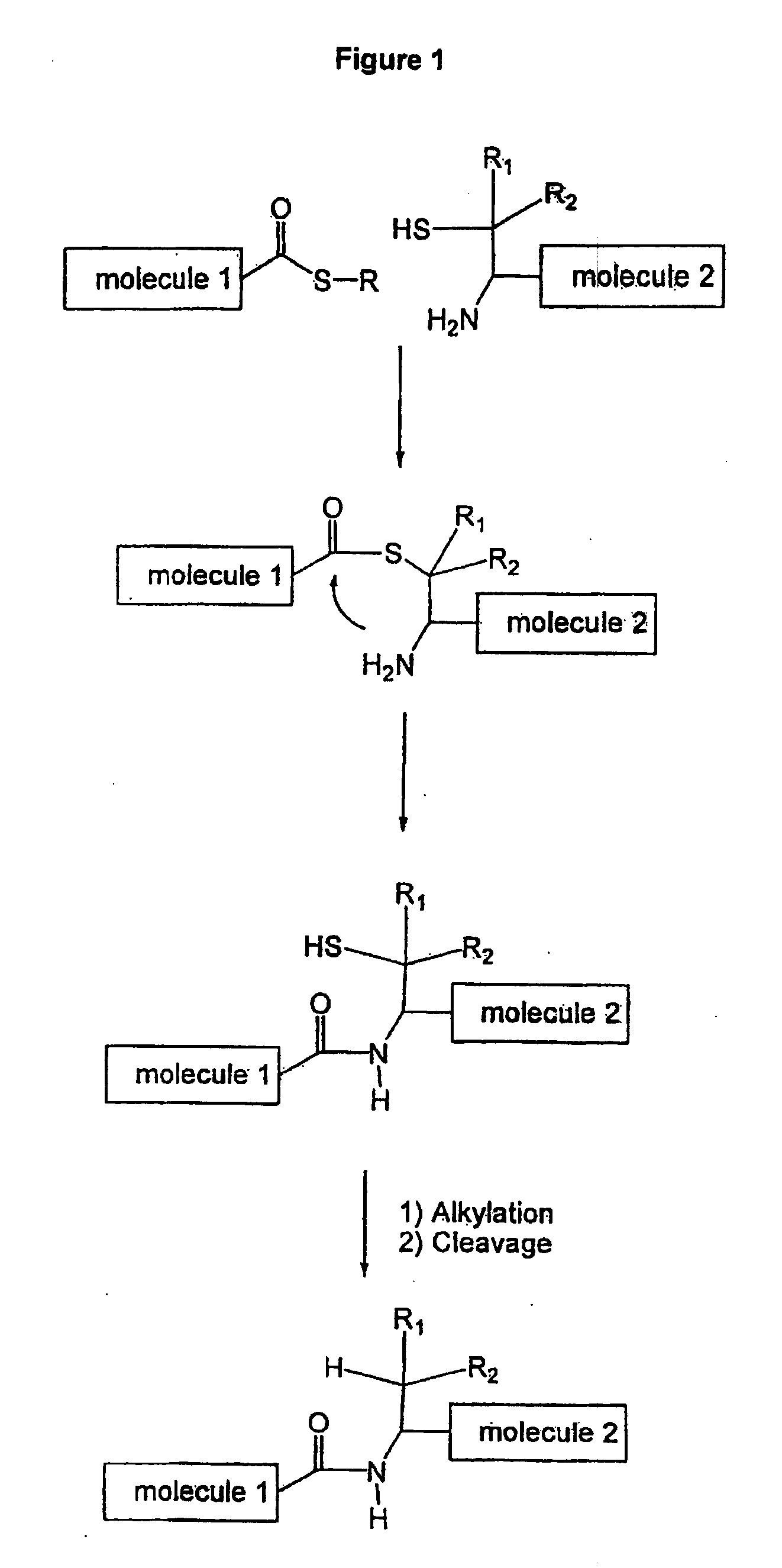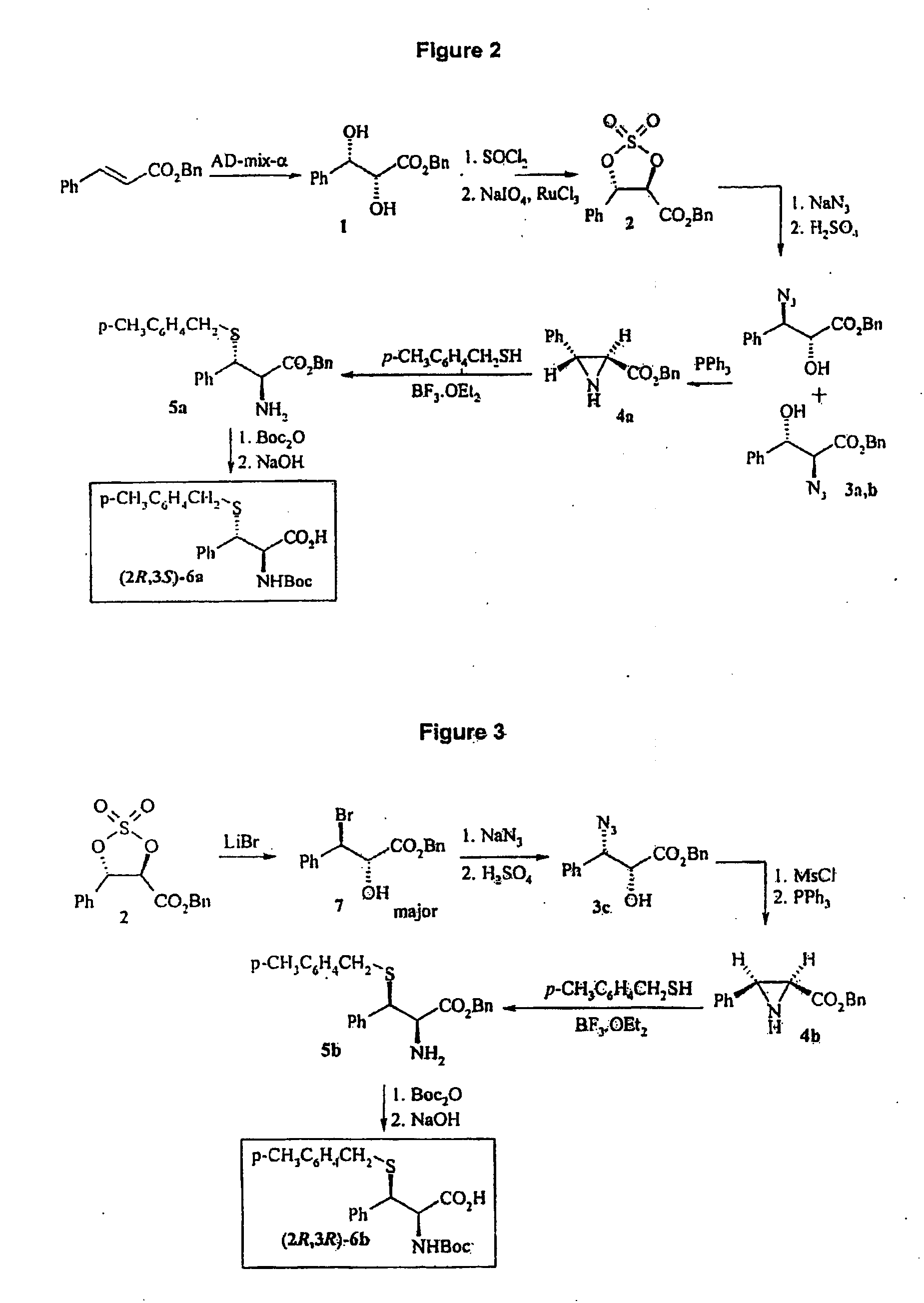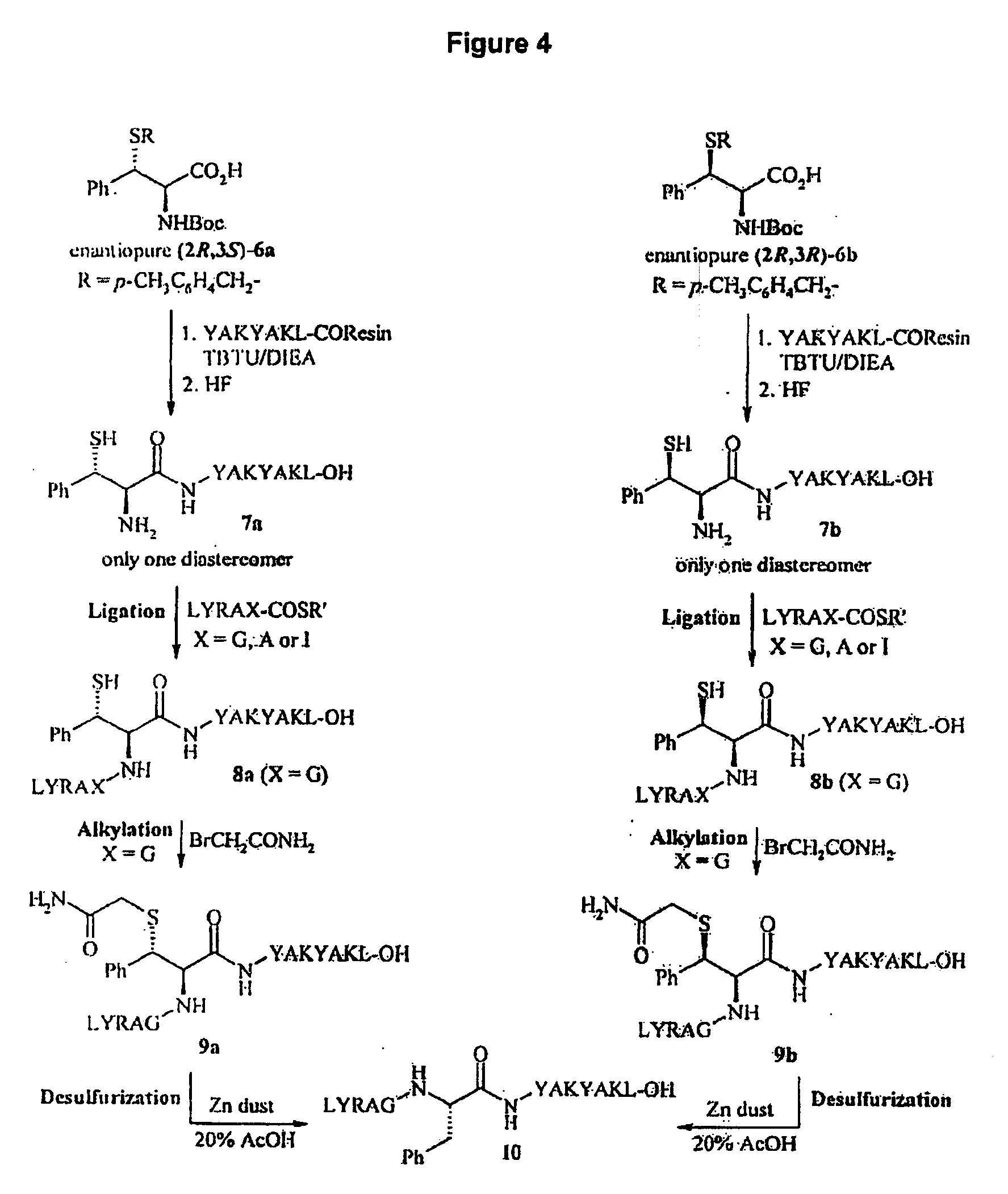Side-Chain Extended Ligation
a side chain and ligation technology, applied in the field of side chain extended ligation, can solve the problems of variable reaction yield related to particular amino acids, requirement for n-terminal cysteine, etc., and achieve the effect of high yield and fast reaction ra
- Summary
- Abstract
- Description
- Claims
- Application Information
AI Technical Summary
Benefits of technology
Problems solved by technology
Method used
Image
Examples
example 1
General Materials and Methods
[0059]Peptides were synthesized in stepwise fashion on a modified ABI 433A peptide synthesizer by SPPS using in situ neutralization / HBTU activation protocols for Boc-chemistry on PAM resin or thioester-generating resin following standard protocols (Hackeng et al., supra; Schnolzer et al., Int. J. Pept. Prot. Res., 1992, 40, 180-193; and Kent, S. B. H. Ann. Rev. Biochem. 1988, 57, 957-984). After chain assembly the peptides were deprotected and simultaneously cleaved by treatment with anhydrous hydrogen fluoride (HF) with 5% p-cresol and lyophilized and purified by preparative HPLC.
example 2
Design of Anti- and Syn-Phenyl Cysteines
[0060]As an initial test residue for the side chain extended chemical ligation method of the invention, phenylalanine residue(s) ready to be incorporated onto a peptide fragment were constructed. With the presence of a mercaptan on the benzylic position, there were two possible geometric isomers that could employed for ligation:
[0061]The two isomers, by having the two reacting moieties (mercaptan and the amine) on the same side (syn phenylcysteine) or on opposite sides (anti phenylcysteine) might have different properties either in ligation or during the desulphurisation / cleavage step or in both. Thus, the synthesis of the two isomers is necessary to find the best isomer (both ligation and cleavage steps) to be used in our strategy.
example 3
Preparation of (2R,3S)-2,3-dihydroxy-3-phenylpropionic Acid Benzyl Ester
[0062]Referring to FIG. 2, to a stirred solution of AD-mix-α (9.8 g) and methanesulfonamide (666 mg, 7 mmol) in t-BuOH (ml) and water (ml) at room temperature was added benzyl cinnamate (1.67 g, 7 mmol). The resulting mixture was stirred at room temperature for 24 h. Sodium sulfite (10.5 g) was added, and the mixture was stirred for 30 nm, diluted with ethyl acetate, washed with water. Organic layer was dried over MgSO4, filtered and concentrated. Flash chromatography (ethyl acetate / pentane 1 / 2) on silica gel afforded compound 1 (1.55 g, 81%) as a white solid.
PUM
| Property | Measurement | Unit |
|---|---|---|
| Fraction | aaaaa | aaaaa |
| Fraction | aaaaa | aaaaa |
| Fraction | aaaaa | aaaaa |
Abstract
Description
Claims
Application Information
 Login to View More
Login to View More - R&D
- Intellectual Property
- Life Sciences
- Materials
- Tech Scout
- Unparalleled Data Quality
- Higher Quality Content
- 60% Fewer Hallucinations
Browse by: Latest US Patents, China's latest patents, Technical Efficacy Thesaurus, Application Domain, Technology Topic, Popular Technical Reports.
© 2025 PatSnap. All rights reserved.Legal|Privacy policy|Modern Slavery Act Transparency Statement|Sitemap|About US| Contact US: help@patsnap.com



